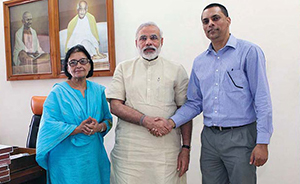Editor’s Desk
Typically, this would be considered Diaspora Season in India. Overseas Indians from different corners usually keep their tryst with India during the months of December and January. The majority of the older diaspora that comes from erstwhile British, French and Dutch colonies are descendants of Indians who went to work on indenture—or a time bound contract—following the abolition of slavery. The last group of indentured workers moved out of India in the second decade of the 20th century before the 80-year-old practice was brought to a halt by the colonial entities. They are also called the plantation diaspora given that they mostly worked in sugar, tea, rubber and coffee plantations around the world whose produce helped power these European nations into positions of great economic strength. In some cases they are fifth or sixth generation persons of Indian origin. They are settled across these former colonies in Africa, South Asia, the northern fringes of mainland South America, the Caribbean, islands in the Indian Ocean and the Pacific Ocean. The newer diaspora, on the other hand, is made up of people who left India relatively recently—mostly post 1960s to find greener pastures in North America, Europe, Australia, New Zealand, parts of the Asia Pacific and the Gulf. Their immigration story, of course, is an ongoing one.
Both the old and new diaspora have significantly different expectations from their engagement with India. Even though there are quite a few in the older diaspora that have risen to positions of eminence in public and social life in their adopted countries, the majority are still seeking to re-establish and strengthen their connections with their roots provided they are able to trace them in the first place. After all during colonial times they were cut off from India for large passages in time and were not familiar with the changes that were taking place in their country of origin. Visits back to India were few and far between, often discouraged and disallowed by the colonial agents and plantation owners who recruited them. Spiritually, culturally and linguistically it is hugely important for this diaspora to keep its connections with India alive. Since the bulk of the older diaspora travelled from northern and southern India, their descendants often come on pilgrimage to these parts, preserve the language of their ancestors, and practice music, dance and customs the way their forbears once did. Of course in some of these nations there has been a mixing of cultures, and hence it is not always easy to find pure Indian traditions being practiced. But nevertheless the quest to remain Indian in their ways remains everlastingly in their hearts.










Comments.